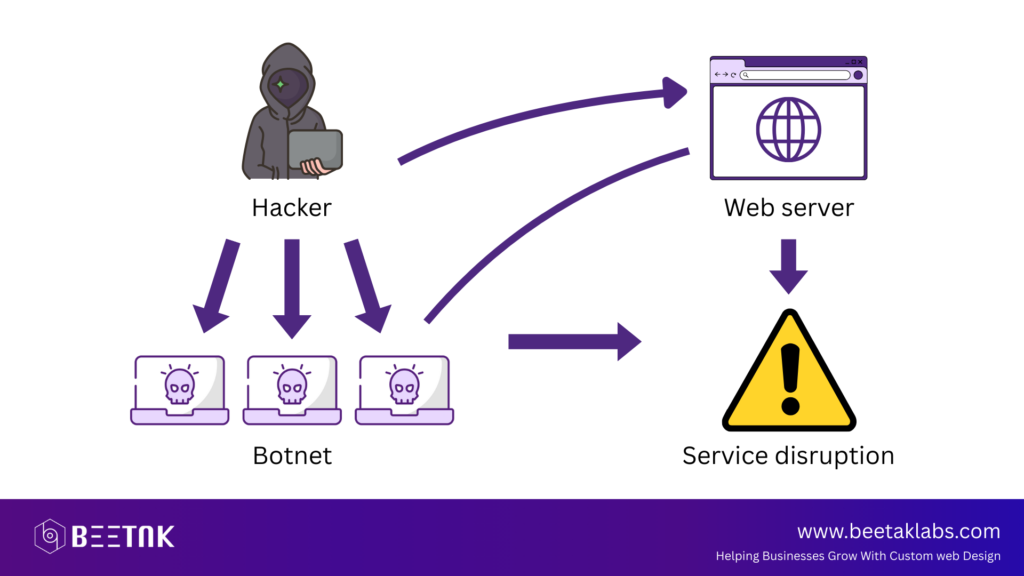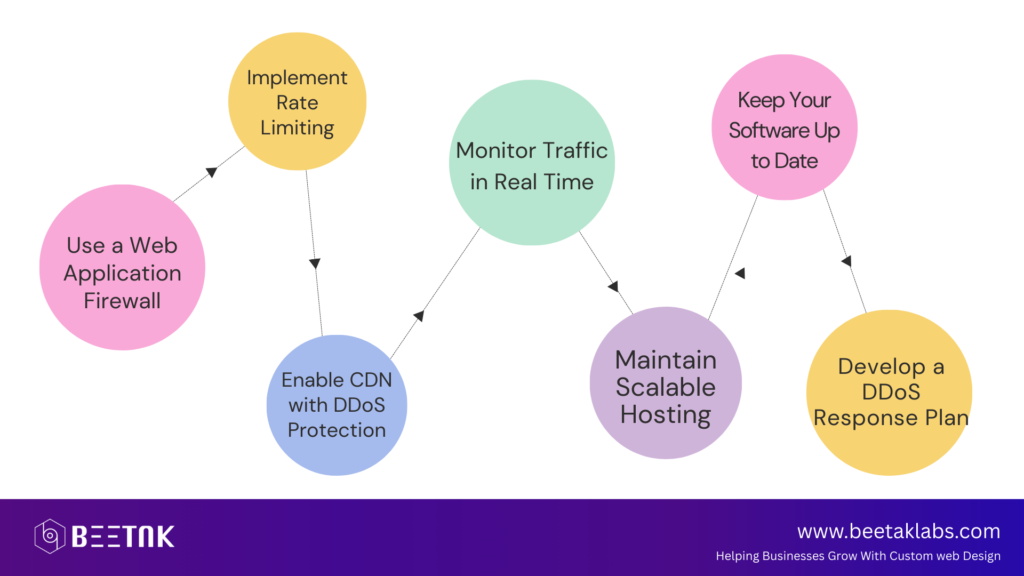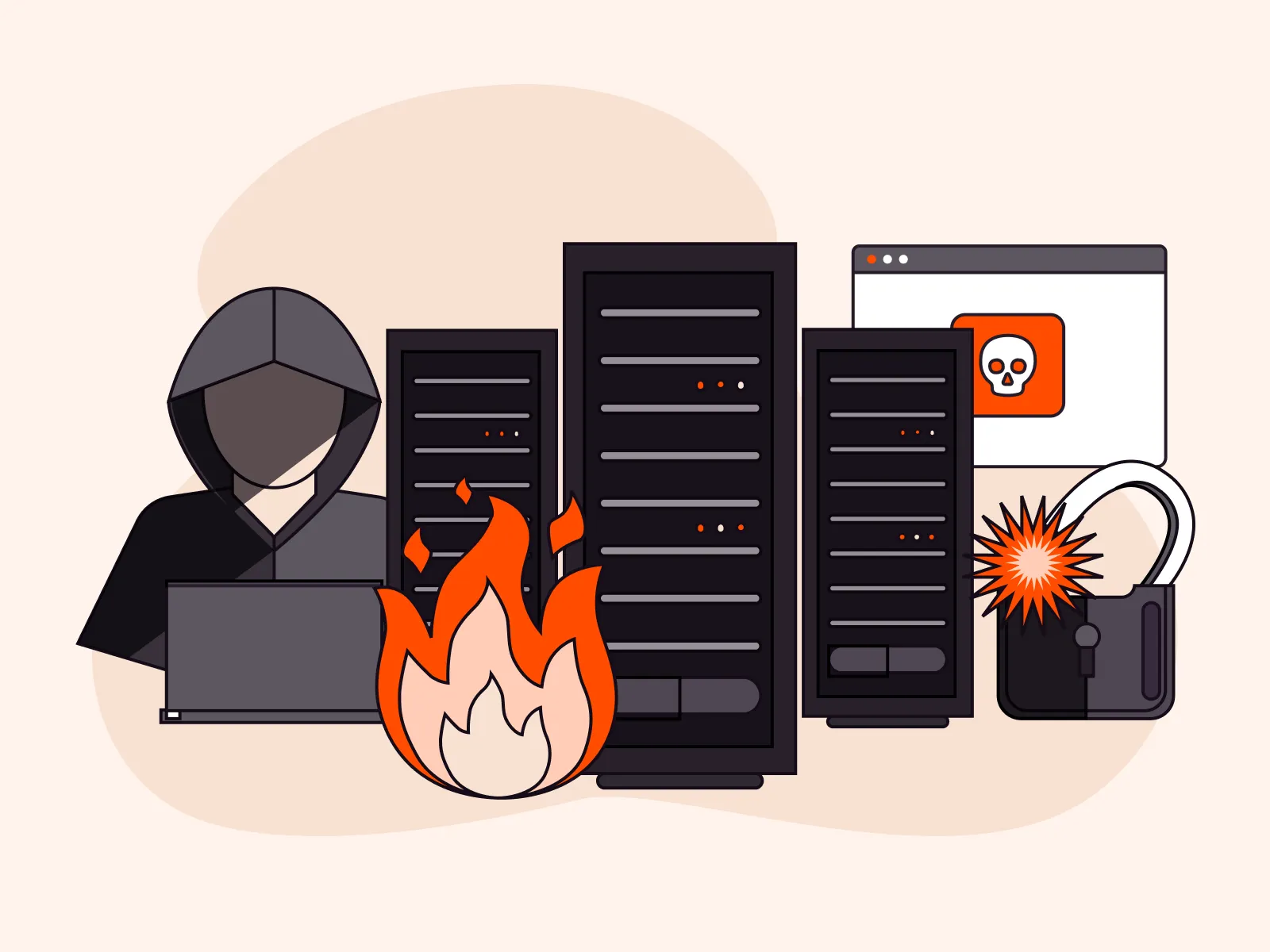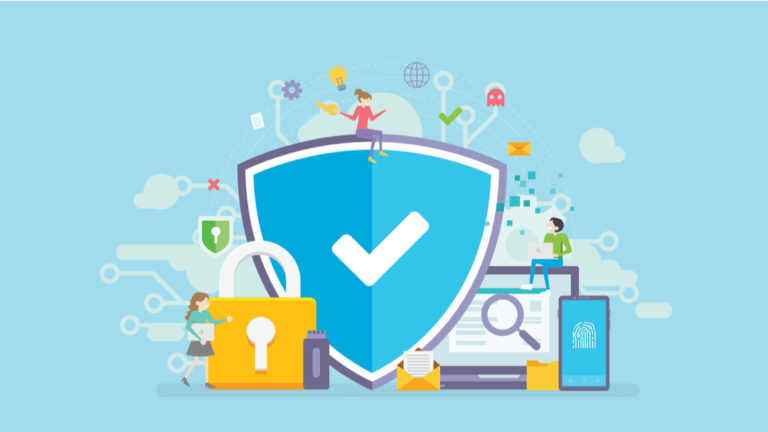Introduction
A Distributed Denial of Service (DDoS) attack is one of the most disruptive cyber threats a website can face. It occurs when multiple systems flood the bandwidth or resources of a targeted server, overwhelming it to the point of downtime. For businesses, the impact can be devastating—causing lost revenue, damaged reputations, and even long-term trust issues with customers.
Fortunately, there are proven strategies and technologies to help defend your website against DDoS attacks. In this guide, we’ll walk you through what DDoS attacks are, how they work, and most importantly, how to prevent them.
Understanding DDoS Attacks
What Is a DDoS Attack?

A DDoS attack targets websites or networks by sending an overwhelming amount of fake traffic from numerous sources. These sources are often hijacked devices or bots that form what’s called a “botnet.” Because the attack comes from multiple IP addresses, it becomes difficult to block manually.
Why Are Websites Targeted?
Websites are targeted for various reasons—ranging from political activism and business rivalry to pure vandalism or extortion. Regardless of the motive, the effects are the same: your site slows down or crashes, leaving real users unable to access your services.
How to Identify a DDoS Attack
Recognizing an attack early is essential. Signs include:
- Sudden spike in website traffic
- Slow loading times or complete website unavailability
- Increased bounce rates or failed login attempts
- Traffic coming from unusual geographic locations
While these symptoms might indicate a viral post or legitimate surge in traffic, always investigate to rule out a potential DDoS attempt.
Best Practices to Prevent DDoS Attacks

1. Use a Web Application Firewall (WAF)
A Web Application Firewall acts as a protective barrier between your website and incoming traffic. It filters out malicious requests and can detect unusual behavior. Modern WAFs often come with built-in DDoS mitigation tools, helping to block known botnets and rate-limit abusive traffic.
Recommended tools:
- Cloudflare WAF
- AWS Shield
- Imperva
2. Implement Rate Limiting
Rate limiting controls how many requests a user can make in a given timeframe. By capping the number of hits from a single IP, you reduce the risk of server overload.
Rate limiting is especially effective for login pages, contact forms, or API endpoints that may be prime targets.
3. Enable CDN with DDoS Protection
A Content Delivery Network (CDN) distributes your website’s content across multiple servers worldwide. Not only does this improve loading speed, but many CDNs also offer built-in DDoS protection, which absorbs and disperses traffic from large-scale attacks.
Learn more about how Cloudflare protects against DDoS attacks
4. Monitor Website Traffic in Real-Time
Continuous traffic monitoring allows you to detect unusual patterns early. Analytics tools can alert you if a spike appears out of the ordinary, allowing you to act quickly.
Use services like:
- Google Analytics
- New Relic
- Datadog
Set up automatic alerts for unexpected traffic surges so your team can respond immediately.
5. Maintain Scalable Hosting
Choose a hosting provider that offers scalable infrastructure. Cloud hosting services like AWS, Google Cloud, or Azure can automatically adjust resources during high traffic periods—whether it’s a legitimate surge or a DDoS attack.
Look for hosts that offer auto-scaling and integrated DDoS protection as part of their service packages.
6. Keep Your Software Up to Date
Outdated CMS platforms, plugins, or server configurations may contain vulnerabilities that attackers can exploit. Regularly updating your systems helps close security gaps and ensures you’re using the latest protection features.
7. Develop a DDoS Response Plan
Preparation is key. Your plan should include:
- Who to contact during an attack (e.g., your hosting provider or IT security team)
- Steps to block or reroute traffic
- Internal communication procedures
- Post-attack analysis and documentation
Testing this plan periodically will help your team respond calmly and effectively during a real incident.
After the Storm: What to Do Post-Attack
Forms should If your site experiences a DDoS attack, take the following actions:
- Analyze traffic logs to understand how the attack occurred.
- Report the attack to your hosting provider and security vendors.
- Implement stronger firewall rules and update your security protocols.
- Notify your users about the outage (if it impacted them) and reassure them of the steps being taken.
You can also check out our Best Practices for Regular Website Backups & Security for ongoing best practices to keep your site protected.
Final Thoughts: Prevention Is Better Than Downtime
While DDoS attacks can’t always be prevented 100%, being proactive with strong security infrastructure, real-time monitoring, and scalable resources significantly reduces the risk. A prepared business can quickly detect and mitigate these attacks before any major harm is done.
Cybersecurity isn’t just a technical concern—it’s a critical part of maintaining customer trust and operational continuity.
Want more tips on keeping your website secure and high-performing? Check out our other blogs on Website Maintenance, Accessibility, and SEO Optimization to build a stronger digital presence.



